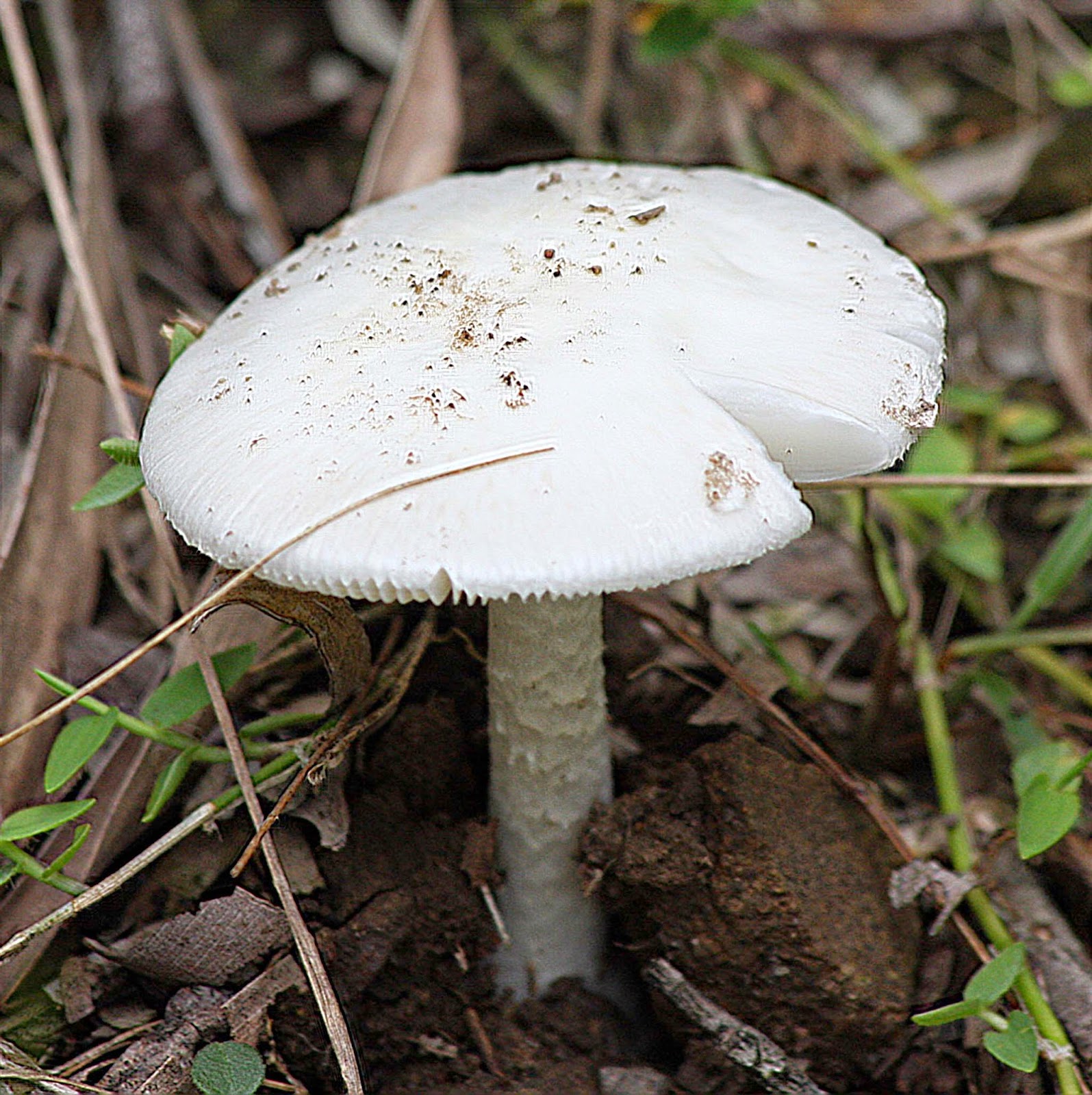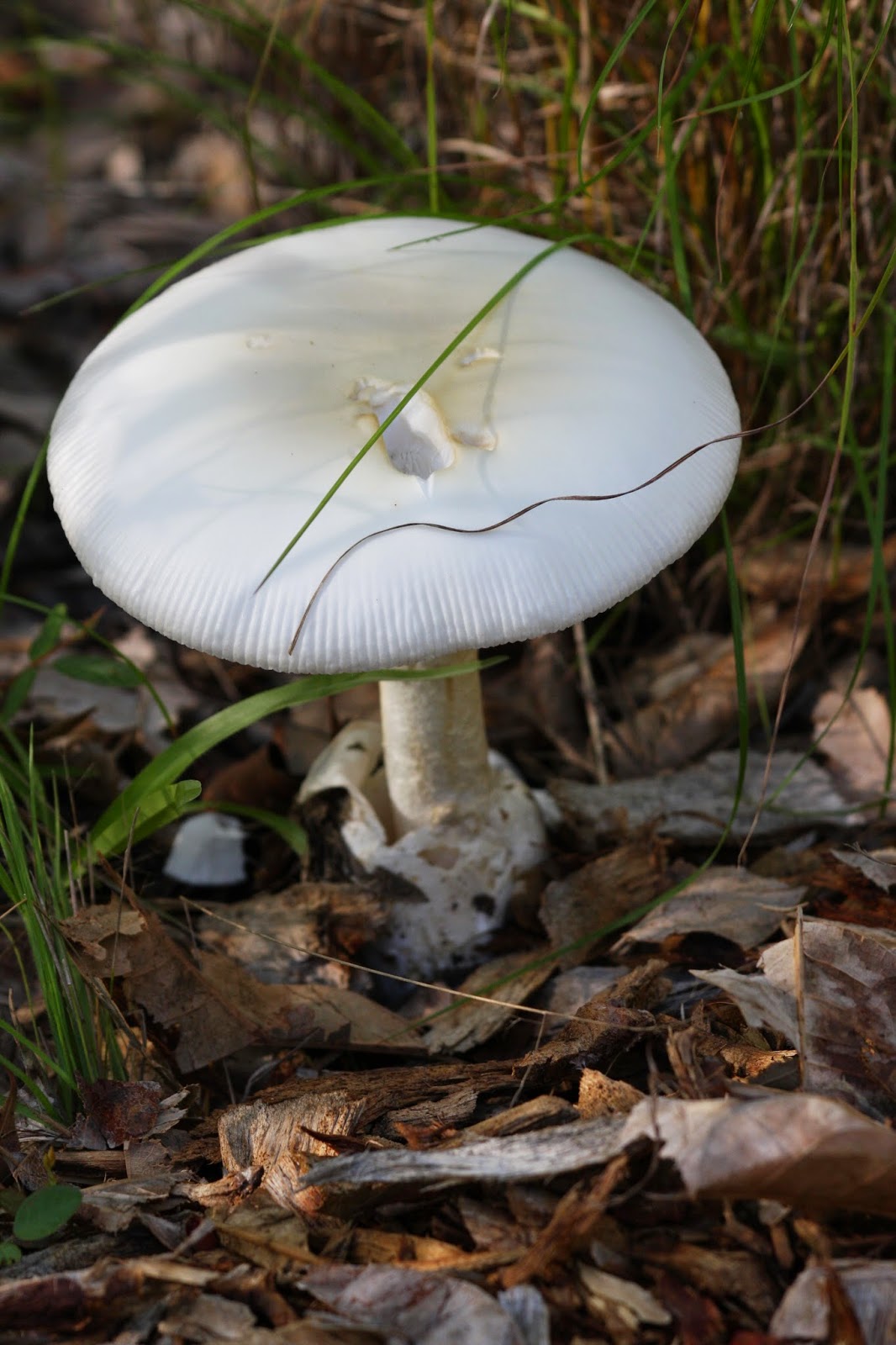 |
| Red-necked Wallaby trying out the fresh grass on the dam wall. |
 |
| and trying out a bit of vine growing through a Bougainvillea. |
One area of fascination for me was the family of Pacific Black Duck that appeared on the dam on the last day of November. Initially there were ten ducklings, but within a couple of days that dropped to seven. I have no idea what got them, but the list of possible assassins is long. Snakes, Lace Monitors, Hawks, Falcons, Harriers, Kookaburras and foxes are but a few of the potential killers. Towards the end of the month Mom and the seven ducklings disappeared for a week and when they reappeared there were six. Within a couple more days they were down to four, but now, a month later the remaining four would appear to be large enough to be able to fend for themselves and I've been watching them flapping their wings in preparation for flight.
 |
| The original ten. |
 |
| By now at a week or so, down to seven but gaining in confidence. |
 |
| 2-weeks and growing fast. |
 |
| At 3-weeks. A favourite spot was a bale of straw I'd put in the dam to lower the algae levels. |
 |
| Still young enough to get under Mom. |
 |
| Even if it was a bit of a squeeze. |
 |
| I loved watching them dabble in the shallows. |
 |
| By week 4 they were growing fast. |
 |
| A wave of ducklings picking up the clearings beneath the feeder. |
 |
| Still only half the size of Mom, but now looking like the real thing. |
 |
| New years day and we have 5-ducklings left. |
Of course, it's very sad that so many didn't survive, but that's nature for you. Those that have survived have given me great pleasure and I'm looking forward to seeing them fly, although when they do I probably won't recognise them when and if they return.
Whilst the ducklings have been growing the Purple Swamphens have continued their laborious nest building. They eventually built 5-nests, but have returned to the first, which they are now focusing a lot of effort on.
 |
| No wonder my dam wall is looking so bare. |
 |
| No leaf too large. |
It's that time of year when a lot of juveniles begin to appear, especially amongst the parrot population and so we've been treated to visits from juvenile Cockatoos, Galahs, Pale-headed Rosellas and King Parrots. The Wallabies appear to be carrying young as well, so it's obviously the time of rebirth for the land as the rains come and provide the necessary growth for the wildlife to flourish. It's also the time when a lot of interesting mushrooms and toadstools appear.
 |
| Pink and shaggy |
 |
| Virgin white |
 |
| Soft ochres |
 |
| Forests of toadstools on a mulch heap. |
 |
| Bright orange fungi growing from the bark of fallen branches. |
 |
| This was taken at about 8 am, interesting collar. |
 |
| By 4pm it was twice the size and had umbrella'd out. |
Regulars (seen at least 5 days in the week)
Australian Magpie
Bar-shouldered Dove
Bronzewing
Brown Honeyeater
Channel-billed Cuckoo
Double-barred Finch
Galah
 |
| Family of Galahs with a juvenile in the centre. |
Little Corella
 |
| Little Corellas in the Silky Oak |
Olive-backed Oriole
Pacific Black Duck
Peaceful Dove
Pied Currawong
Plumed Whistling Duck
 |
| Plumed Whistling Ducks on the water. |
Purple Swamphen
 |
| Water off a duck's (or in this case a Purple Swamp Hen) back. |
Rainbow Lorikeet
 |
| Rainbow Lorikeet |
Spangled Drongo
 |
| Sulphur Crested Cockatoo in the Silky Oak. |
Torresian Crow
Variegated Fairy Wren
 | |
| Male Variegated Fairy Wren in the Bougainvilleas. |
White-throated Gerygone
White-throated Honeyeater
Wood Duck
Yellow-faced Honeyeater
Common (Seen at least twice a week)
Black-faced Cuckoo Shrike
Grey Shrike Thrush
 |
| Grey Shrike Thrush with a Cicada in beak. |
Laughing Kookaburra
Little Friarbird
Magpie Lark
Noisy Friarbird
Pale Headed Rosella
 |
| Family of Pale-headed Rosella, juvenile in the middle. |
Pied Butcherbird
Red-browed Finch
Uncommon (Seen two to five times during the month)
Crested Pigeon
Dollarbird
Eastern Yellow Robin
Lewins Honeyeater
Little Pied Cormorant
Noisy Miner
Red-backed Fairy Wren
 |
| Juvenile male (above) and female Red-backed Fairy Wrens |
Swamp Harrier
Wedge-tailed Eagle
Welcome Swallow
White-headed Pigeon
White-throated Treecreeper
White-faced Heron
Rare (Seen only once)
Azure Kingfisher
Brown Cuckoo DoveCollared Sparrowhawk
Eastern Whipbird
Leaden Flycatcher
Mallard
Willie Wagtail
